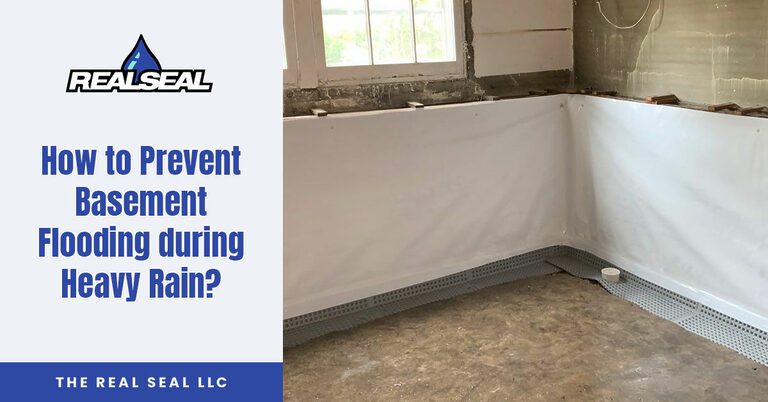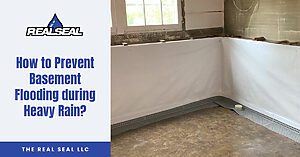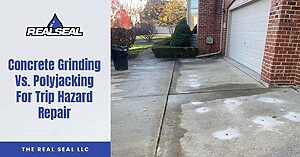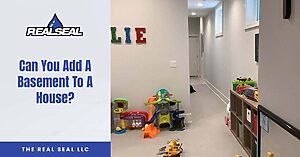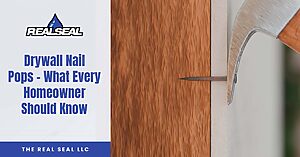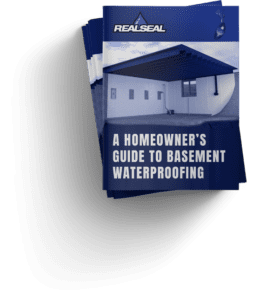As a homeowner, you’re likely aware of the potential disaster heavy rain can bring, especially if you have a basement. The threat of a flooded basement is not to be taken lightly, as it can result in significant property damage and costly repairs.
Common signs of basement flooding, such as damp walls, musty odors, mold growth, water stains, and visible cracks in the foundation, can be alarming. However, by taking immediate action and implementing proactive measures, you can significantly reduce the risk of basement flooding. This sense of control over the situation can help alleviate the anxiety associated with potential water damage. Read on to learn some methods that can empower you to prevent basement flooding during heavy rain and protect your home from water damage.
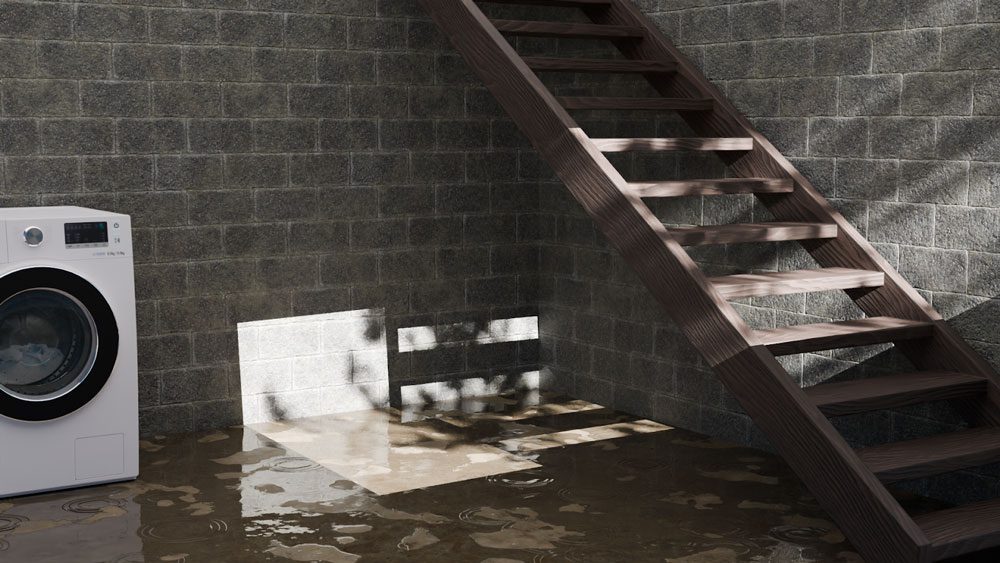
Understanding Basement Flooding
Causes Of Basement Flooding
Basement flooding can occur for various reasons. The primary culprit is heavy rain, which can produce more water than drainage systems handle, leading to seepage into basements. However, other factors can contribute to this issue. For instance, if the ground around your house slopes towards it instead of away from it, rainwater can flow towards your foundation and cause leaks. Clogged gutters can also be problematic as they overflow and deposit water next to your house. Cracks in your foundation walls act as entry points for water. If your sump pump, designed to remove water, is not functioning correctly, it can’t do its job effectively. Understanding these issues can help you devise strategies to keep your basement dry and prevent water damage. You can also check if water is coming up from your basement and take measures to prevent water from coming up from the basement floor.
Impact Of Flooding on Homes
The impact of basement flooding goes far beyond just dealing with water damage. When water seeps into your basement, it creates a perfect environment for mold to grow. Mold can spread quickly, causing health problems for you and your family. Flooding can also weaken the structure of your home. The foundation supports the entire house and can crack and shift because of excess water, leading to severe and expensive repairs.
Water can destroy any personal belongings you store in the basement, like furniture, electronics, or sentimental items. This damage can be emotionally and financially devastating. A flooded basement can create an unhealthy living environment, with musty odors and damp conditions that attract pests. Preventing basement flooding is crucial to avoid these harmful effects and protect your home and health.
Prevent Basement Flooding
Ensure Proper Grading
Ensuring proper grading around your home is like giving water a clear path away from your house. Imagine your home perched on a small hill. When it rains, you want the water to cascade down the slope, away from your house, not linger around the foundation. To achieve this, the ground around your home should gently slope downwards, creating a natural pathway for rainwater to flow away. This simple yet effective landscaping technique can help keep your basement dry by preventing water from seeping into the foundation. It’s like guiding water to its rightful place, reducing the risk of water infiltration.
Install A Sump Pump (with Battery Backups)
A sump pump is your basement’s defense against flooding. Installed in a pit at the lowest point of your basement, it collects excess water and pumps it away from your house. But remember, regular maintenance and testing of the sump pump are essential to ensure it functions correctly during heavy rain. By taking this responsibility, you are proactively protecting your home from potential water damage.
Maintain Your Gutters And Downspouts
Imagine a rainy day when water pours down from your roof and is supposed to flow smoothly through your gutters and downspouts away from your home. The water has nowhere to go if those gutters and downspouts are clogged with leaves, dirt, or other debris. Instead of being carried away, it overflows and starts to pool around the foundation of your house. This pooling can lead to serious problems like basement flooding and damage to your home’s structure.
To avoid this, cleaning out your gutters and downspouts regularly is crucial. Think of it as giving them a good sweep to clear out anything that might block the water flow. Doing this ensures that the water can move freely through the system when it rains.
Additionally, check where your downspouts release water. They should extend at least five feet away from your house. This distance helps ensure that the water doesn’t settle around your foundation but is directed far enough away to prevent any potential damage.
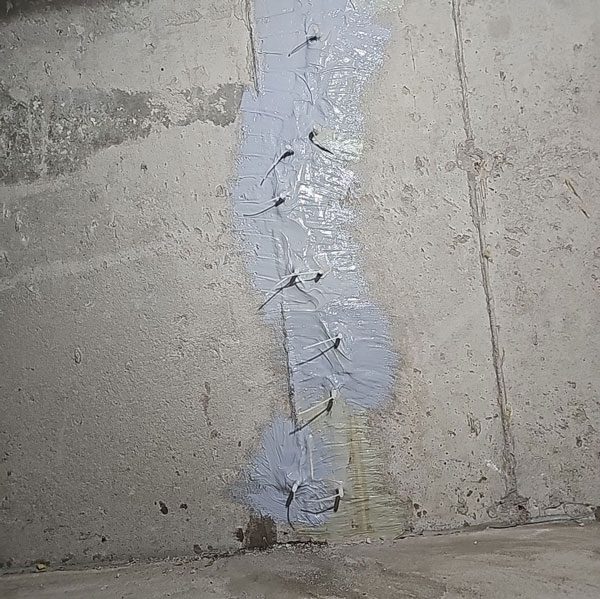
Seal Cracks In Foundation Walls
Cracks in foundation walls are like tiny doors that let water into your basement. If left unsealed, these cracks can lead to severe water damage. To prevent this, you can use epoxy, a solid sealant to block water from entering. It’s essential to check your foundation for any new cracks regularly. If you find any, get them sealed immediately to keep your basement dry and safe. Think of it like a routine check-up for your house—catching problems can save you a lot of trouble.
Install A Drain Tile System
A drain tile system, or a footing or perimeter drain, is a French drain installed explicitly around a house’s foundation. A French drain system is a great way to control groundwater and keep your basement from flooding. Imagine a pipe with small holes, like a long, skinny colander. This pipe is placed in a trench, which is a narrow, shallow ditch. Then, the trench is filled with gravel. The holes in the pipe allow water to enter, and the gravel helps with water flow and keeps debris out of the system. From there, the water flows away to a sump pump or away from the foundation of your house, keeping it dry and safe. This system can be installed inside and outside your home, depending on where it’s needed most.
Proper Landscaping Techniques
While trees and large shrubs can be beautiful and provide shade, be careful where you plant them. Their roots can grow deep and wide, sometimes disrupting the soil around your foundation. This disruption can create pathways for water to seep into your basement. Plant large trees and shrubs 10 to 15 feet away from your house to prevent this.
Select plants and shrubs known for their ability to soak up water. These plants act like sponges, reducing the water pooling around your house. Good choices include native grasses, ferns, and perennials with deep root systems. By absorbing excess water, these plants help keep it away from your foundation.
By thoughtfully selecting plants and shaping your landscape, you can turn your yard into a powerful ally against basement flooding. This approach enhances your home’s curb appeal and adds a layer of protection against water damage.
Waterproofing Solutions
Vapor Barriers
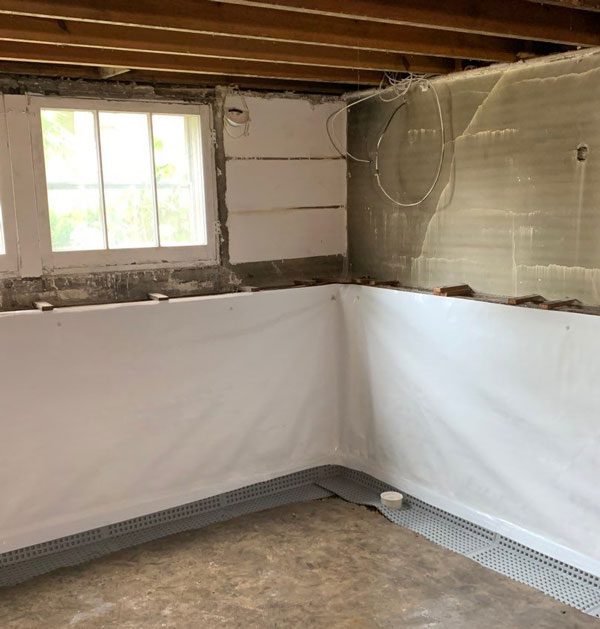
Vapor barriers act like a shield for your basement, stopping moisture from entering. They are usually made from heavy-duty plastic and installed on the walls and floors. By blocking moisture, vapor barriers prevent dampness, mold, and other water-related problems.
Window Wells, Drains, And Covers
Window wells, drains, and covers protect basement windows from water infiltration. Window wells are installed around basement windows to prevent soil and debris from blocking the window. Drains ensure that any water entering the well is directed away, while covers prevent debris from clogging the drain. Together, these components keep your basement windows dry and functional.
Discharge Lines/Gutter Extensions
Discharge lines and gutter extensions are essential for directing water away from your home’s foundation. Discharge lines carry water from the sump pump out and away from the house, ensuring it doesn’t pool near the foundation. Gutter extensions attach to the end of your downspouts, directing rainwater further away from your home. These extensions help prevent water from seeping into your basement, protecting your foundation from damage.
Emergency Measures During Heavy Rain
Immediate Steps To Take
During a heavy rainstorm, there are quick actions you can take to reduce the chance of your basement flooding. First, ensure your sump pump works properly, as this device helps keep water out of your basement.
Next, move any valuable items, such as electronics or important documents, to a higher level in your home to protect them from potential water damage.
Monitor weather updates to stay informed about the storm’s severity. Finally, having an emergency plan can help you respond if water starts to seep into your basement.
If your basement starts to flood, act quickly to minimize damage. Turn off the power to the basement and use pumps and wet vacuums to remove water. If the flooding is severe, contact a professional.
- Emergency Pumps and Vacuums: Emergency pumps and wet vacuums can help remove water quickly during severe flooding. These tools can be lifesavers in preventing extensive water damage and mold growth.
Routine Maintenance And Inspections
Regular Inspection Tips
Regular inspections of your basement and foundation are essential to catch potential problems. It is advisable to inspect your basement at least twice a year, especially before and after the rainy season. Check for signs of water damage, mold, and cracks in the foundation. Ensuring all waterproofing measures are intact and functioning is vital for ongoing flood prevention.
Smart Home Technology For Flood Detection
Smart home technology can enhance your flood prevention efforts. Devices such as water sensors and automatic shutoff valves can alert you to potential flooding and take immediate action to prevent damage.
Professional Waterproofing Services
Hiring professional waterproofing services can give you peace of mind by ensuring your basement stays dry and safe. Experts in waterproofing will thoroughly evaluate your home, identifying areas prone to water damage. They will then suggest the best waterproofing methods tailored to your home’s needs so you won’t have to worry about water seeping into your basement, causing damage, or creating an environment for mold growth. By relying on professionals, you can trust that your basement will be well-protected against heavy rain and potential flooding.
Do You Need Help Preventing Basement Flooding?
Preventing basement flooding during heavy rain requires a combination of proactive measures, regular maintenance, and emergency preparedness. You can protect your basement and home from water damage by understanding the causes and signs of potential flooding, implementing both interior and exterior waterproofing solutions, and maintaining your home and drainage systems.
If you’re in the Chicagoland area and need professional help keeping your basement dry, The Real Seal is here. Our experienced team specializes in waterproofing and offers free estimates to assess your needs. Don’t wait for the next heavy rain to turn your basement into a disaster zone. Contact us today to schedule a consultation and take the first step toward a dry, safe, and worry-free basement. With The Real Seal, you can trust that your home will be protected against flooding and water damage, giving you peace of mind no matter the weather.
